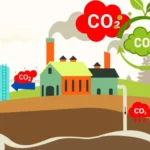Key Points
- Urban air mobility (UAM) aims to introduce electric vertical takeoff and landing (eVTOL) aircraft for city travel.
- Major companies like Airbus, Boeing, Joby Aviation, and Volocopter are leading the development and testing of eVTOLs for carrying passengers and cargo.
- Regulatory frameworks by the FAA and EASA are in progress to ensure safety and integration into air traffic systems.
- Los Angeles and Singapore are pioneering cities preparing to implement UAM services and infrastructure.
In a groundbreaking development for urban transportation, several major cities worldwide are gearing up to launch urban air mobility (UAM) services by 2025. UAM aims to revolutionize city travel by introducing electric vertical takeoff and landing (eVTOL) aircraft, promising to reduce congestion, lower emissions, and significantly cut travel times.
The collaborative effort between government agencies, aerospace companies, and tech startups leads the charge. Major players like Airbus and Boeing and emerging startups such as Joby Aviation and Volocopter are at the forefront of this innovation. These companies are developing and testing eVTOLs that can swiftly and efficiently carry passengers and cargo across urban landscapes.
The U.S. Federal Aviation Administration (FAA) and the European Union Aviation Safety Agency (EASA) are developing regulatory frameworks to ensure the safety and integration of these new aircraft into existing air traffic systems. These regulations will address critical aspects such as airworthiness standards, pilot training, and airspace management, paving the way for commercial urban air mobility operations.
One of the first cities expected to implement UAM is Los Angeles. The city, known for its notorious traffic congestion, has partnered with several UAM companies to establish vertiports—designated areas for eVTOL takeoffs and landings—across strategic locations. These vertiports will be integrated with existing transportation hubs, such as train stations and airports, providing seamless multimodal connectivity.
Similarly, Singapore is investing heavily in UAM infrastructure, aiming to become a global hub for urban air travel. The city-state’s dense population and limited land area make it an ideal candidate for UAM. Singapore’s Civil Aviation Authority collaborates with international partners to conduct extensive trials and feasibility studies.
Environmental impact is a significant consideration driving the adoption of UAM. eVTOL aircraft, powered by electric batteries, offer a greener alternative to traditional ground transportation. Reduced reliance on fossil fuels and lower noise pollution are among the benefits that align with global sustainability goals.
Public acceptance and affordability are crucial factors for the success of UAM. Companies are investing in public outreach programs to educate residents about the safety and benefits of eVTOLs. Furthermore, battery technology and mass production advancements are expected to reduce costs, making urban air travel accessible to a broader population.
The future of urban transportation is poised for transformation. As urban air mobility services become operational, the vision of flying taxis ferrying passengers above bustling city streets is set to become a reality, marking a new era in how people move within cities.












